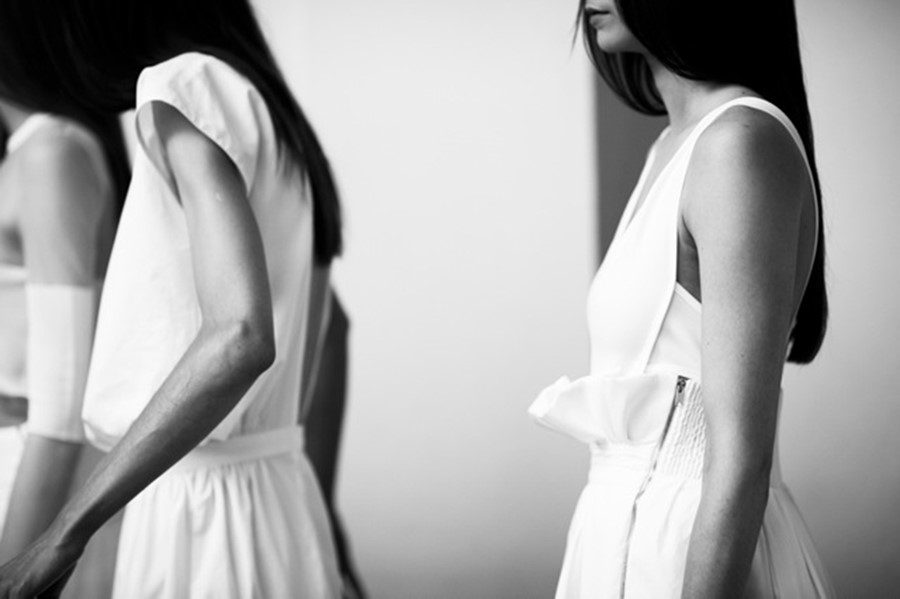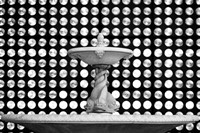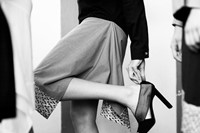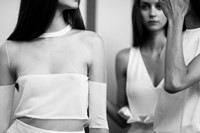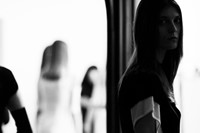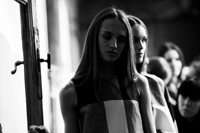A look at Damir Doma's new collection
An eclectic clash of European cultures met on Wednesday night under the dimming skies of Florence, when the Croatian-born German-raised designer Damir Doma paraded his Resort collection to the press and invited guests of Pitti W, the womenswear equivalent of the Italian tradeshow Pitti Uomo – now wrapping up its 12th edition in the Tuscan capital.
Every season the international powerhouse behind Pitti’s 3-day event nominates one guest designer to show their mainline menswear and another to show their women’s cruise line. Paris-based Doma joins a long line of prestigious names who trip the light fantastic between creativity and commerce – with the likes of Proenza Schouler, Rodarte, Giambattista Valli, Peter Pilotto and Haider Ackermann among the previous women’s wear invitees. Offered the run of Florentine palaces and gardens, warehouses and galleries, Damir saw fourteen locations before settling on the Giardino Corsini – a 17th century formal garden attached to the Corsini al Prato palace in central Florence. “The collection is very much based on the location, in terms of lightness, transparency, also the whites and creams” said Damir hours before the show, walking through the lavender bushes and citrus trees of the garden in the sweltering 36° heat. “In a way, it is built around the classical atmosphere of the place, the perspective of the garden paths and the statues”.
“In a way, the collection is built around the classical atmosphere of the location, the perspective of the garden paths and the statues”
What emerged from this claim was a balanced wardrobe of minimalist tailoring and loose summery dresses in bright white and sandy tones, juxtaposed (as though by dusk’s climbing shadows) with variegated stripes of grey and black. A royal undertone of amethyst purple and a pop of sunny orange broke the sobriety, as Damir spoke of “the graphic idea of the dresses, that they look like paintings. There are some ideas of sportswear, cut-out jersey polyamides that become a sort of swimsuit or body. I love the crispness of the sheer fabrics and the graphic lines. It feels so light”. Garments featured elastic ruching at the waist that cinched flippy skirts or cut-out shift dresses, while others hung loose from the shoulders – spliced in contrast silks to echo the cubist movement. “There is this idea of contemporary art. I’ve moved away from the artists I would reference in the beginning of my career, away from the earthiness of their work. Before it was Anselm Kiefer and (Joseph) Beuys. Now I look towards people like Sterling Ruby and Anselm Reyle. Some looks I put together like you would a sculpture – where you put together perhaps concrete with plastic – something that feels very raw”. The show clicked best when these elements came together, losing interest in all-white or black silhouettes that although pretty, felt somewhat rudimentary. Standouts came in the opening "painting dresses"and separates in a spotted silk laminate. A touch of the garden in the garments, as it were.
"Garments...hung loose from the shoulders – spliced in contrast silks to echo the cubist movement"
For a designer, Pitti is always about adding that little 'je ne sais quoi', going the extra mile to celebrate the exquisite surroundings and to open up their universe to what is potentially a brand new audience. For his part, Damir flew in contemporary Italian pianist Giovanni Guidi after a round of US tours to play the show. “We talked about improvisation from songs that I had used in past seasons,” explained Damir,“I didn’t want to use classical piano pieces”.
A glossy moodboard magazine on every seat was his last added extra – a project he said exemplified the repetitive flow of the runway looks and the way they identified with his archives (many patterns returned from past seasons, albeit re-jigged like the soundtrack). “I made the magazine with the graphic agency Mieré und Mieré from Cologne. They do such beautiful things, they are working with some of my favourite magazines like 032C and Apartamento,” exclaimed the designer, leafing through the collaged pages. In a quick browse one may find a young Sigourney Weaver poised beneath a gilded Louise Bourgeois, or Ad Reinhardt’s deep indigo canvas from the 60s slowly disappearing page-by-page under geometric architectures. It was all there in the collection, if one looked closely – but in the fading light it may remain in one’s mind a diaphanous blur – victim to the ephemeral nature of the fashion show, soaked in prosecco under the Tuscan sun.
Text by Dan Thawley
